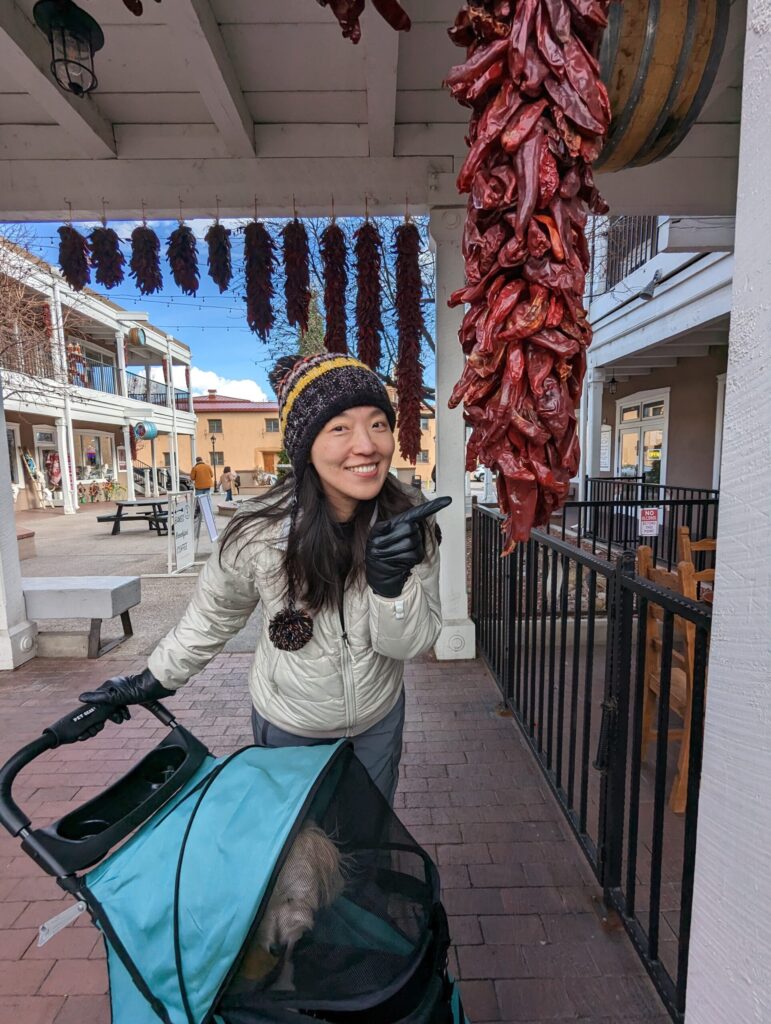Speaking to our most favorite thing in the world – well, besides our dog Bawan(肉圓). TRAVEL! While we try to take a few trips internationally, and sprinkle in a few destinations in the US every year, we look forward to doing this full time.
With slow travel, you don’t have to worry about weather or timing things – the place not open on Mondays? It’s ok, I’ll come back tomorrow. Don’t feel like rushing through the streets of Lisbon? Well, let us relax today and check out this neighborhood tomorrow.
What is full-time travel? Most people working full-time are used to taking 2-3 week vacations, visiting a country or destination, trying to see as much as possible, and then returning to work eager for the next break. But there’s another way to travel—slow travel. Slow travel means spending a month or two (or even three!) in one place instead of hopping between hotels in different cities. This approach allows you to significantly slow down your itinerary. The mindset shifts completely, opening up new possibilities. With slow travel, you don’t stress about the weather or scheduling. If a museum is closed on Mondays, no problem—you can visit the next day. Don’t feel like rushing through the streets of Lisbon? Take it easy today and explore a neighborhood at your own pace tomorrow.


This approach takes some getting used to, but I truly believe it’s far better. When we were younger, we packed our itinerary tightly, trying to fit in as many activities as possible from 7 a.m. to 11 p.m. each day during a two-week trip. Our expectations were high, and it was always stressful when plans fell through or logistics made it difficult to execute what we had carefully researched. Slow travel gives us the freedom to enjoy what we want at a more relaxed pace. Of course, this requires a significant amount of time, but we’re preparing for that! Beyond time, there are definitely other important factors to consider with slow or full-time travel.
- Locations – Where do you want to go? It’s essential to consider how long you can stay in each country. Most countries allow stays ranging from 90 to 180 days, so it’s important to clarify these details before planning. In Europe, there’s the Schengen Zone rule: if you hold a U.S. passport (or one from another visa-waiver country), you can spend up to 90 days within any 180-day rolling period in the Schengen Area without a visa. We’ll cover this in more detail in another post. Many countries also offer long-term visas for non-working retirees. Although the application process can be a bit involved, having the ability to stay longer makes a big difference. So many details to cover—stay tuned! 😀
- Logistics – Getting There and Getting Around. As slow travelers, the largest expense is often reaching the continent where you plan to spend your time. Once you arrive, there’s no need to rush. You can travel by train, bus, or even rent a car—there’s no single right way. Flights within the continent or nearby regions tend to be much more affordable once you’re there, and having the time allows you to hunt for better deals. Another option to consider is one-way cruises, especially relocation cruises, which can be a unique and cost-effective way to travel between continents.
- Lodging – Where to Stay. Hotels aren’t always the top choice here. Alternatives like Airbnbs and house sitting (yes, this is a real option) are great options too. A key tip: staying longer often means lower rates. There are also many credit card strategies to earn free hotel nights and gain elite status with various hotel chains. We’ll cover more about lodging in another blog.
- Luggage (LOL, I love alliteration—sorry!)—this is where it gets interesting. As full-time travelers, lugging around oversized bags is a no-go. The art and science of packing light is a topic that sparks passion in every traveler. Over the years, we’ve mastered the skill of traveling lighter and lighter, gradually minimizing what we bring. Choosing sturdy, reusable, and essential items depends on each person’s unique personality and needs, making for a fascinating conversation among nomads.
So yeah that is a LLLLot of things. Hopefully we can unpack that a little more in future posts.
全職旅行?慢速旅行?
說到我們最喜歡的東西——嗯,除了我們的狗狗肉圓之外。旅行!雖然我們每年都會嘗試幾次國際旅行,並在美國境內遊玩幾個目的地,但我們期待著全職旅行。
什麼是全職旅行?就像大多數工作年限內的人一樣,我們習慣在一個國家或目的地旅行2-3週,把那裡的景色盡收眼底,然後回來工作,又需要一個假期。但還有一種不同的方式可以做到這一點——慢旅行。慢旅行意味著我們不再在一個國家的不同城市住在飯店,而是在那裡待上一兩個月(甚至三個月!),大大放慢行程節奏。這種旅行方式會徹底改變旅行的心態,可能性也會大大增加。慢旅行讓你不必擔心天氣或時間安排——某個地方週一不開放?沒關係,我明天再來。不想在里斯本的街道上匆匆忙忙?好吧,我們今天放鬆一下,明天再去看看這個街區。
這種方法需要適應,但我相信這樣更好。我承認,我們年輕的時候,為了兩週的旅行,每天都會把行程安排得滿滿噹噹,每天從早上7點到晚上11點,盡可能多地體驗各種活動。我們的期望很高,但當計劃沒有按計劃進行,或者一些後勤問題導致我們花了好幾個小時研究後才確定下來時,壓力總是很大。慢旅行給了我們一個緩衝期,讓我們可以放慢節奏去做想做的事情。當然,這需要我們投入大量的時間,但我們正在為此做準備!除了時間之外,慢旅行/全職旅行肯定還有其他需要考慮的事情。
地點-你想去哪裡?你當然也要考慮你能在那個國家待多久。大多數國家通常有90-180天的停留要求,所以一定要仔細商量。歐洲有一種叫做「申根簽證轉換」的政策-如果你持有美國護照(或其他免簽國家),你可以在申根區任何180天的滾動窗口期內停留最多90天,無需簽證,我們將在另一篇文章中討論。許多國家也為非在職退休人員提供長期簽證——這個過程可能需要一些時間,但能夠在一個國家停留更長時間會帶來很大的不同。細節太多了……敬請期待。 😀
後勤-如何到達目的地以及如何出遊。對於喜歡慢節奏旅行的人來說,最大的開銷通常是到達你想去的大陸。之後,就不用急了!火車、公車,甚至租車都可以。沒有固定的出行方式。即使是洲內或附近的航班,通常也會便宜很多。你還有時間去找更划算的機票。另外,單程遊輪也是不錯的選擇,尤其是跨洲遊輪。
住宿——住宿地點。酒店並非總是首選。 Airbnb、房屋看護(是的,這也是一種選擇)也是不錯的選擇。關鍵在於,住得越久,價格就越便宜。有許多信用卡小妙招,可以幫你獲得大量飯店免費住宿,並在不同的連鎖飯店中提升會員等級。更多關於住宿的信息,請見另一篇部落格。
行李──這才是有意思的部分。身為全職旅行者,你肯定不想帶著大件行李到處走。輕裝上陣的藝術/科學是每個人都熱衷的話題。隨著這些年來的旅行,我們學會了越來越輕裝旅行,並且慢慢減少了需要攜帶的物品。攜帶堅固、可重複使用和必需的物品取決於每個人的個性和需求,但這絕對是不同遊牧民族之間一次富有啟發性的討論。

Leave a Reply